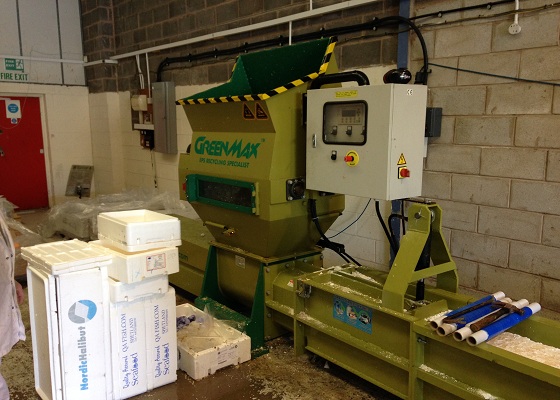Recently, residents near the Cataraqui River notice unwanted debris from the Third Crossing construction site along the shores of the waterway. Most of them are Styrofoam fragments. Nevertheless, work continues along the shores to clean up the Styrofoam debris left by wildlife who damaged the turbidity curtains throughout the winter.
In fact, Styrofoam always pollutes the water source. It is difficult to degrade naturally and easy to form debris and particles. After being discarded or landfilled, it is easy to be washed into the nearby river with the waste stream. That’s why Styrofoam is eaten by fish and shrimp in the river, and then goes into the market with the fish and shrimp being caught, further threatening people’s health. To alleviate the pollution of Styrofoam in rivers is inseparable from people’s attention. After collection, the newly designed Styrofoam compactor will give it new life.
In a word, the Styrofoam compactor is the most suitable equipment to deal with Styrofoam waste in rivers. The most important reason is that the treatment effect of Styrofoam compactor is far better than other equipment.
Styrofoam compactor adopts the popular cold-pressing technology, which neither damages the physical properties of materials nor affects the compression efficiency by moisture. Unlike machines that need to be heated, the temperature is affected by moisture. Cold pressing technology can process Styrofoam with ultra-high speed and compression ratio without any secondary pollution, which can protect the environment.
Environmental protection is on the one hand, and on the other hand, Styrofoam compactor has realized the regeneration and utilization of Styrofoam. After compression with a ratio of 50:1, it becomes cold pressing blocks, a raw material for granulation, which is popular in the market. Many rivers in the world are polluted by Styrofoam. More activities should be carried out to collect these materials. Styrofoam recycling machine is responsible for the final recycling
